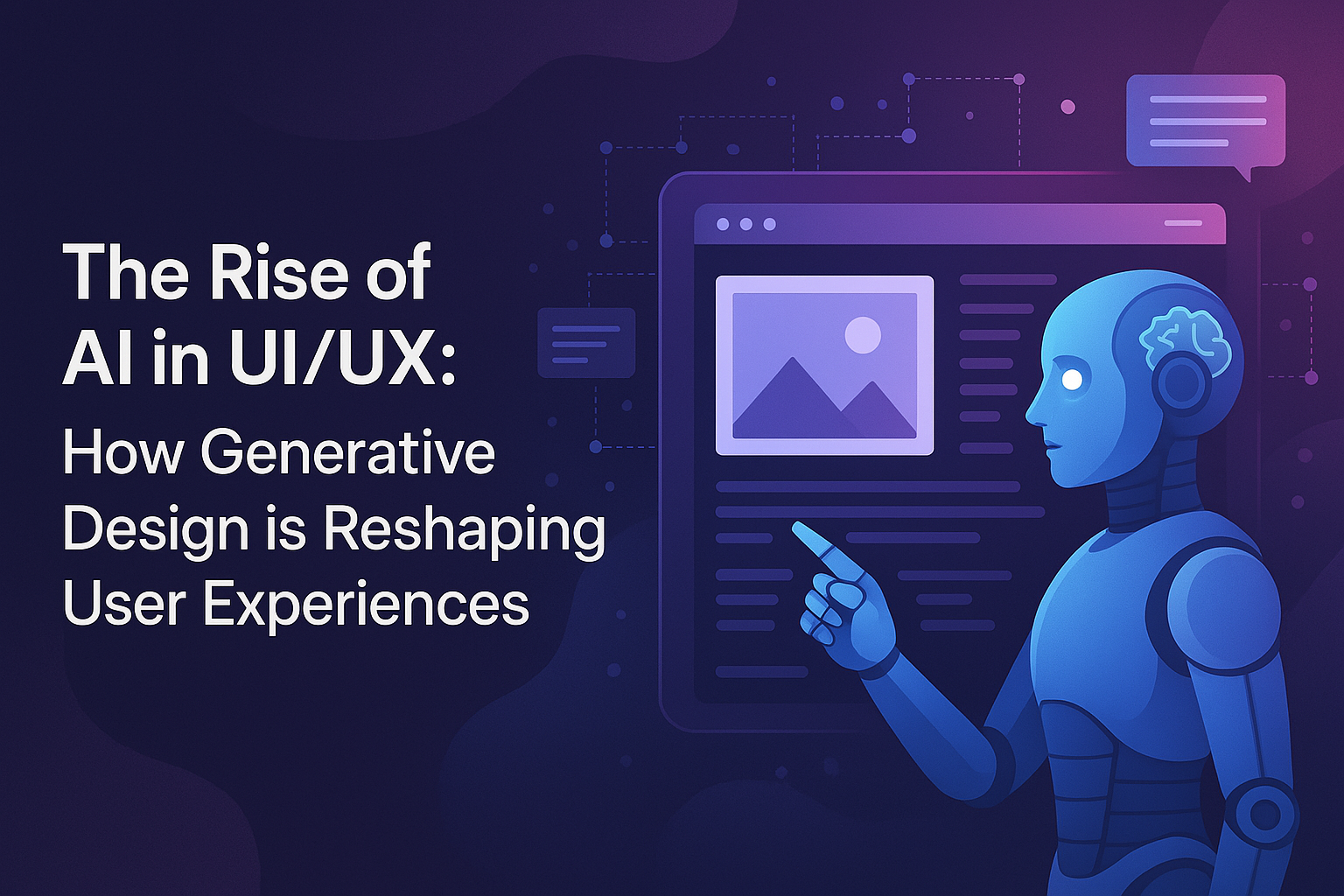The Rise of AI in UI/UX: How Generative Design is Reshaping User Experiences

Introduction
The integration of Artificial Intelligence (AI) in UI/UX design is revolutionising the way digital experiences are created and optimised. Generative design, powered by AI, is enabling designers to automate workflows, enhance personalisation, and improve user interactions like never before. This blog explores how AI-driven generative design is transforming UI/UX and what it means for designers and businesses.
Understanding Generative Design in UI/UX
Generative design in UI/UX leverages AI algorithms to analyze data, understand user behaviour, and generate design solutions dynamically. Unlike traditional design methods, which rely on manual iterations, AI can generate multiple design variations in seconds, refining them based on user feedback and data analytics.
Key Features of Generative Design in UI/UX:
- Automated Prototyping: AI tools can generate multiple interface designs based on specific guidelines, reducing the time spent on wireframing and prototyping.
- Personalised User Experiences: AI analyzes user behavior to create personalised interfaces that adapt dynamically to individual preferences.
- Data-Driven Design Decisions: AI-powered analytics provide insights into user engagement, helping designers make informed choices.
- Adaptive UI Elements: AI-driven UI components can adjust in real-time based on user interactions, improving accessibility and usability.
The Role of AI in Enhancing UI/UX
AI is transforming UI/UX design in multiple ways, making the process more efficient and user-centric. Here are some key areas where AI is making an impact:
1. Automated Design Generation
AI-powered tools such as Adobe Sensei, Figma’s AI-driven plugins, and Uizard help designers generate layout suggestions, color schemes, and design elements based on predefined rules and data inputs.
2. AI-Powered Chatbots and Voice Assistants
Conversational interfaces, including chatbots and voice assistants, are becoming more intuitive with AI. These interfaces can predict user needs and offer contextual assistance, improving customer support and engagement.
3. AI-Driven User Research and Testing
AI can analyze heat maps, session recordings, and A/B test results to understand user behavior patterns. This enables designers to iterate designs quickly based on real-time insights.
4. Predictive UX
By leveraging machine learning algorithms, AI can anticipate user needs and suggest actions before they are taken. This predictive approach enhances usability and provides a seamless user experience.
5. Adaptive and Inclusive Design
AI ensures that digital interfaces are more accessible by automatically adjusting UI elements for users with disabilities. It can modify font sizes, contrast levels, and even suggest alternative navigation options for different user groups.
Challenges and Ethical Considerations
While AI is revolutionising UI/UX, it also brings certain challenges and ethical concerns:
- Loss of Human Creativity: Over-reliance on AI-generated designs might limit human creativity and originality.
- Bias in AI Models: If trained on biased datasets, AI-generated designs may inadvertently exclude certain user demographics.
- User Privacy Concerns: AI-driven personalisation relies on user data, raising concerns about data privacy and security.
- Interpretability and Control: Designers need to maintain control over AI-generated outputs to ensure brand consistency and usability.
The Future of AI in UI/UX Design
AI and generative design are poised to redefine UI/UX practices in the coming years. As technology advances, we can expect:
- More intuitive AI-driven design assistants that work alongside designers to enhance creativity.
- Increased adoption of real-time adaptive interfaces that adjust based on user context.
- Seamless integration of AI in AR/VR experiences to create immersive user interactions.
- Ethical AI frameworks ensuring fairness and inclusivity in design processes.
Conclusion
AI-driven generative design is revolutionising UI/UX by enhancing efficiency, personalisation, and data-driven decision-making. While challenges exist, the benefits outweigh the drawbacks, making AI a powerful ally for designers and businesses alike. As AI technology continues to evolve, embracing these advancements will be key to creating more intuitive and engaging user experiences.
The future of UI/UX is not just about designing interfaces—it’s about crafting intelligent, adaptive, and user-centric experiences powered by AI.